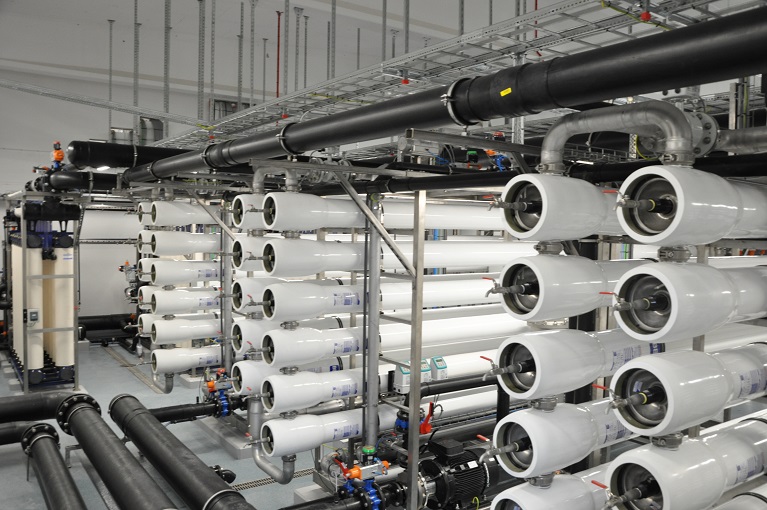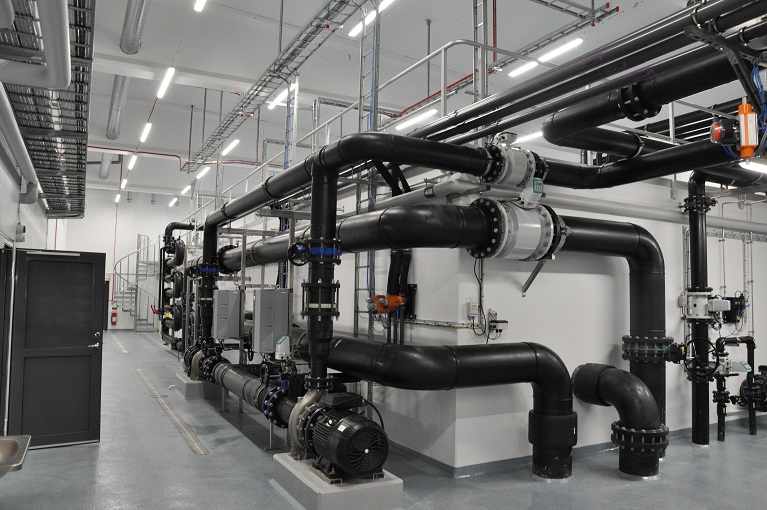

The Swedish municipality of Mörbylånga faced a shortage of drinking water due to the demands of tourism and local industry. The municipality commissioned a Luxembourg-based water technology company to create the first direct water reuse system in Europe.
Mörbylånga municipality is in south east Sweden, on the island of Öland in the Baltic Sea. Popular with Swedish tourists as a summer holiday location, it was facing an extensive and steadily increasing lack of drinking water, especially during the tourist peaks. The municipality was looking for a solution which would ensure a constant fresh water supply to deal with the high number of tourists and the high water volumes required by the local industry. In the past, water has been transported to the island, but the authorities were concerned that this not only created a dependency on external sources, but also environmental and noise pollution as lorries transported water to the island. Peter Asteberg, project manager for the municipality of Mörbylånga, said: “Geographically, located on an island, our municipality is facing a limited availability of fresh ground water. With the prevailing conditions, population growth or any extension of water consuming industry represents a challenge in terms of water supply.”
New treatment system Following a tender process, Apateq, a water technology company based in Luxembourg, was chosen to design and build a treatment system that would ensure a continuous supply of drinking water. The Apateq water treatment plant for Mörbylånga treats brackish well water and pre-treated industrial process water within one single installation. This multi-functionality is due to a combination of Apateq technologies, including dedicated software, which enables the plant to self-adapt to different water qualities.
Sensors constantly measure the water inflow characteristics, which are immediately processed by the plant and result in adapting the process technology automatically in real time, ensuring the correct treatment process at any time. This is new in wastewater treatment, as each of the two streams would traditionally be treated separately from two separate plants.
The pre-treated industrial wastewater flowing into the plant comes from the local poultry slaughterhouse. A specially configured ultrafiltration system is used for the primary slaughterhouse water treatment and can filter residual concentrations of oils and fats (up to 20 mg/l) from the raw water without blocking it. The high bacterial content of the raw water can also be reliably eliminated by the ultrafiltration used.
Due to the geographical proximity to the Baltic Sea, the remaining raw water streams are very saline well water with larger concentrations of divalent iron and 2-valent manganese (up to a maximum of 4 mg/l). The well water is pre-treated in a first step by oxidation with potassium permanganate.
The effluent from the two pre-treated water streams is mixed in a basin and then sent to the joint final cleaning station, which is configured in four identical channels, consisting of ultrafiltration and reverse osmosis. Each channel has a maximum cleaning capacity of 1,000 m3 per day and this can be reduced to a minimum of 500 m3 per day as needed – water demand can be unpredictable due to seasonal tourist peaks on the island.
The entire system is designed to handle a flow capacity from 500-4,000 m3 per day, depending on the seasonal demand. In addition, Swedish water specialist companies will disinfect and remineralise its effluent to drinking water levels, according to Swedish and international regulations. As the influent water enters the plant, the treated effluent is constantly measured to ensure drinking water quality.
Apateq CTO, Ulrich Bäuerle, said: “Our installation in Mörbylånga is the first of its kind in Europe. So far direct water re-use systems have only been installed in Namibia and the US to our knowledge. Considering the increasing demand for fresh water resources worldwide, smart water re-use systems will inevitably play a major role in the global future tackling the challenges of population growth and climate change.”
The inauguration of the plant, a collaboration between Swedish and Luxembourgish companies, took place in July and was attended by Their Royal Highnesses Viktoria, Crown Princess of Sweden and Prince Félix of Luxembourg.




